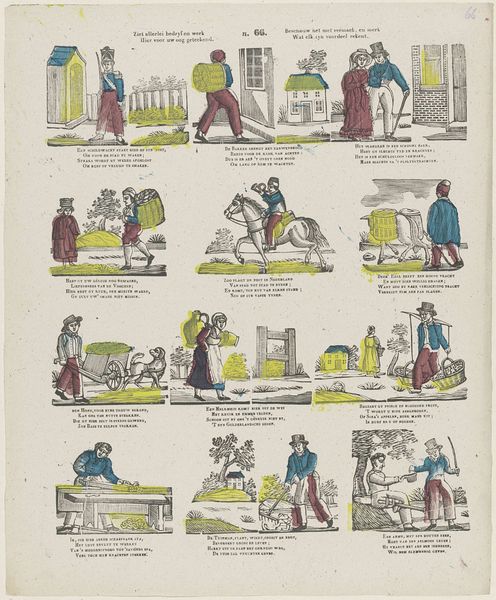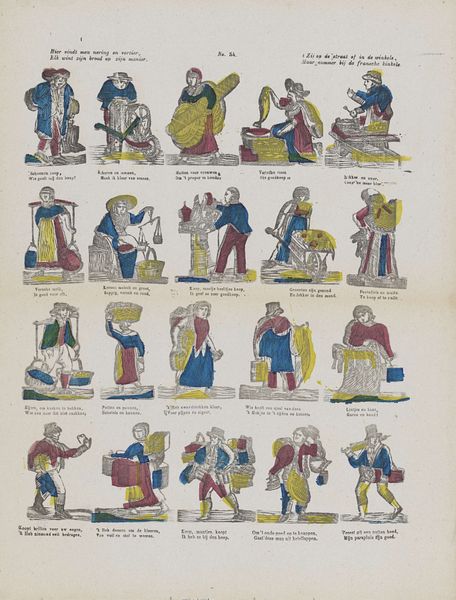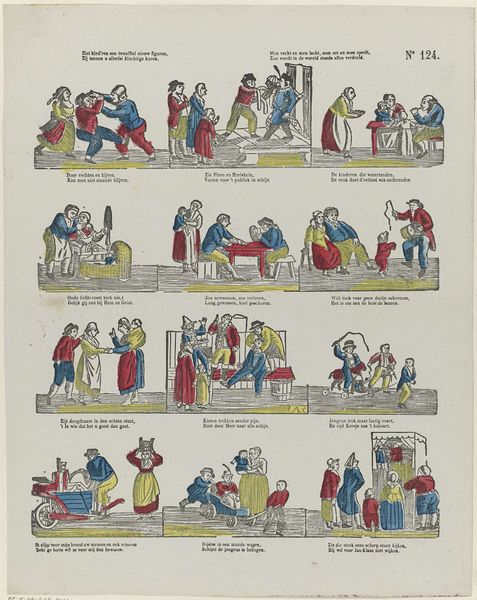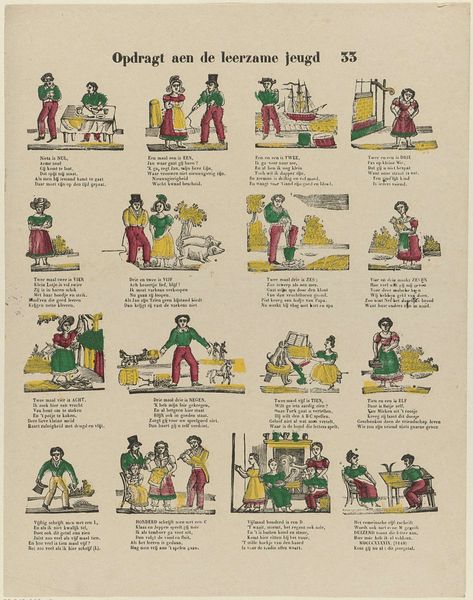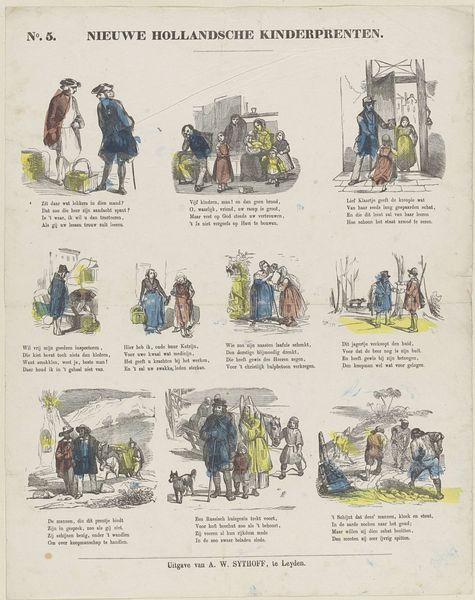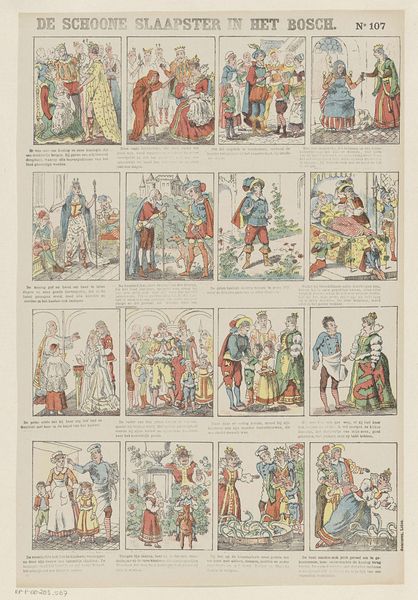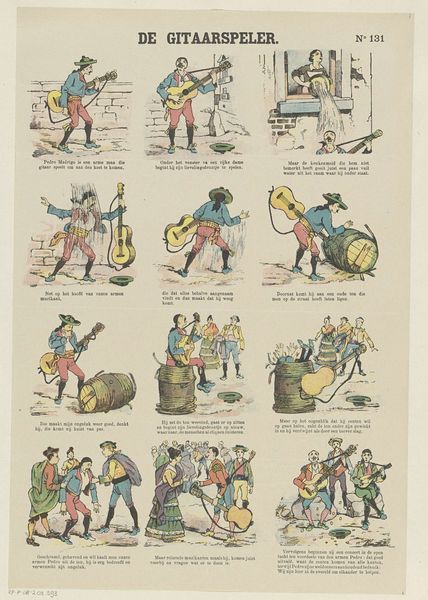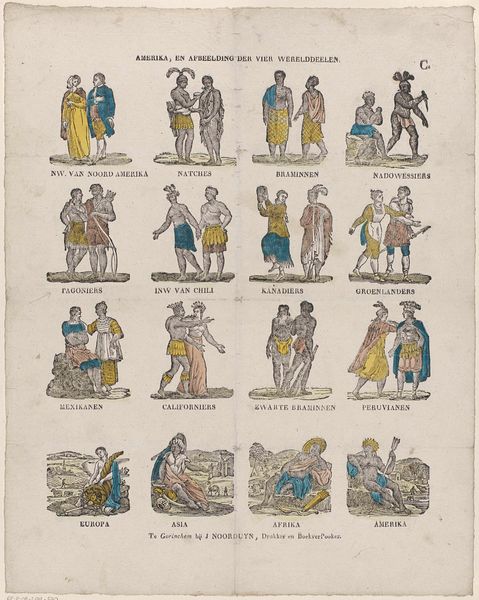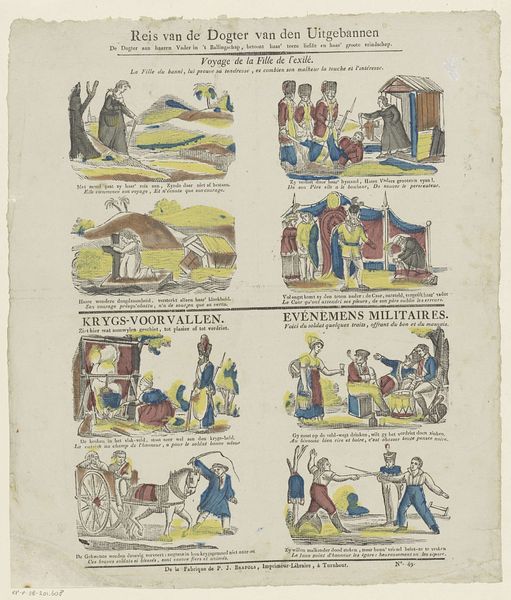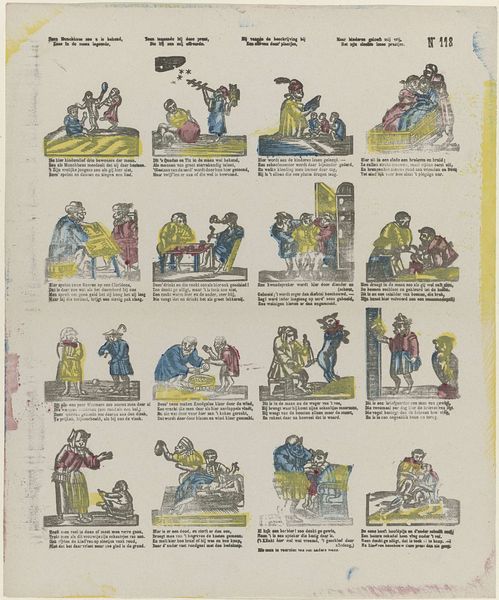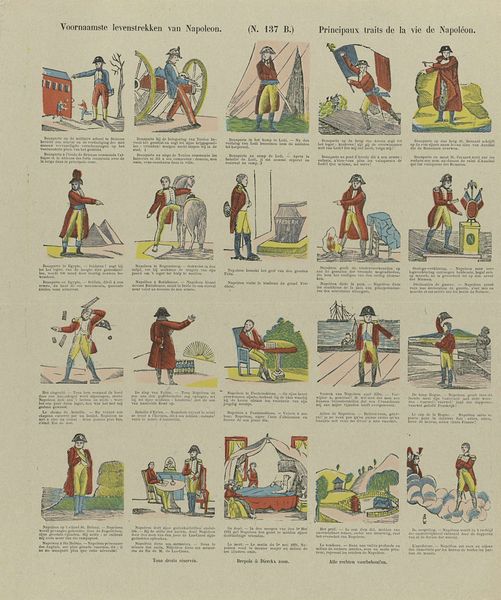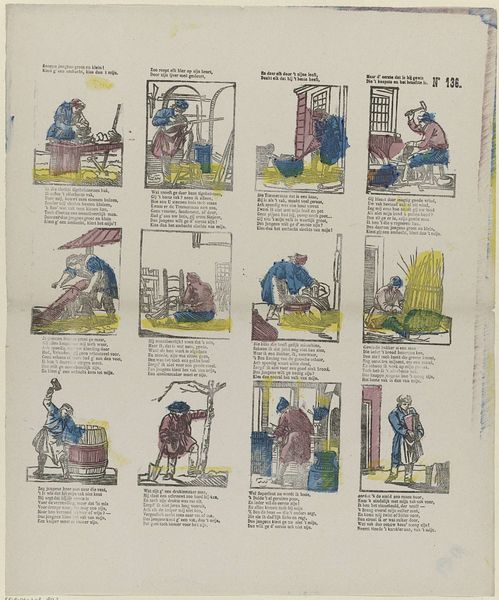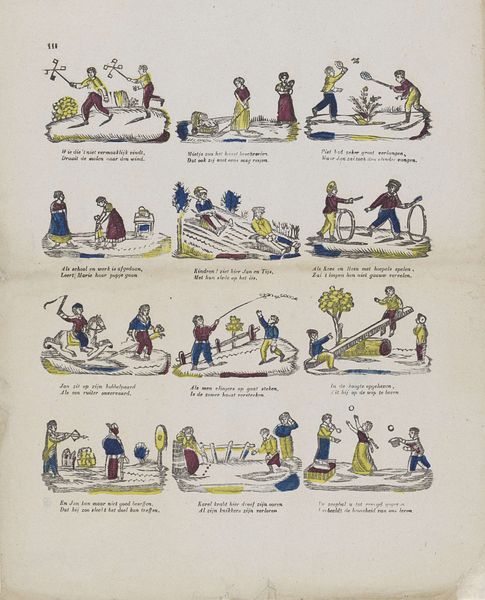
Opdracht aan de jonge en leerzame jeugd / Présent pour la jeunesse docile 1800 - 1833
0:00
0:00
print, engraving
#
narrative-art
# print
#
comic
#
genre-painting
#
engraving
Dimensions: height 428 mm, width 325 mm
Copyright: Rijks Museum: Open Domain
Curator: Welcome. We’re standing before a print titled "Opdracht aan de jonge en leerzame jeugd / Pr\u00e9sent pour la jeunesse docile" by Philippus Jacobus Brepols, created sometime between 1800 and 1833. It's currently held in the Rijksmuseum's collection. Editor: It gives an overall impression of a sort of sampler, but instead of stitchwork, there’s an almost comic-strip quality to these little scenes. Rather moralizing in tone. Curator: It’s an engraving, so the process itself would have involved careful planning, the meticulous transfer of images to a metal plate, and the repetitive labor of printing many copies. This wasn’t high art, but mass production intended for instruction. The very title spells that out. Editor: The imagery is quite interesting. We see a lot of everyday scenes. What stories are they trying to convey through those visual allegories, framed by their simplistic presentation, and bright yet somewhat muted colors? I almost feel transported to a sort of idealized, accessible vision of the early 19th century. Curator: Considering its purpose—the education of young people— the print likely represents societal ideals of conduct. Observe how professions, such as the image showing some kind of writing work being done in an office setting or in domestic spaces are romanticized while negative stereotypes get shown within equally simplified contexts. Editor: And there's a real blend of what might have been seen as virtues versus vices for the youth of the time. How diligence at their studies will lead them on one hand, and indolence may land them to poor circumstances. Are these scenes referencing any sort of common stories of that era that might be easily known to the audience it meant to teach? Curator: Exactly. Think about how the act of consuming these images might also have instilled specific societal norms or aspirations and look to the relation that might create with present society values. What's consistent through that period, and now? The physical act of handling these printed images, would have given youth of that era material engagement of cultural ideology of the period. Editor: Looking at it through the lens of recurring images, you find visual clues regarding labor, moral guidance and social conduct of that time. Almost as important today as back then. Curator: Ultimately, this work offers a lens into a specific period and set of societal values by focusing on materiality of it. Editor: Yes, revealing to us the enduring power of pictorial languages over time through recurring imagery and accessible allegories.
Comments
No comments
Be the first to comment and join the conversation on the ultimate creative platform.
